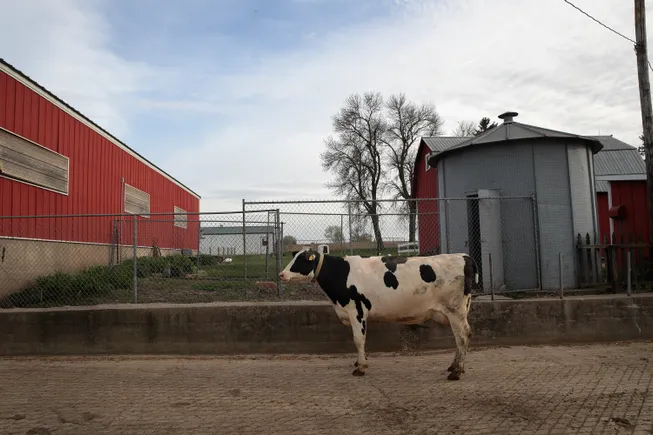Bird flu in dairy cattle reported for first time in Iowa, Minnesota as outbreak spreads

An outbreak of bird flu in dairy cows has now reached 11 states after Iowa and Minnesota each confirmed their first positive case.
The detections add to a widening spread of the virus in the U.S., with bird flu confirmed in over 80 herds across the country. Three farmworkers have tested positive for the virus, including one who reported respiratory symptoms.
The case in Iowa, which was announced Wednesday and is still pending final confirmatory testing, was detected in the northwestern county of O’Brien, according to the state’s Department of Agriculture and Land Stewardship. O’Brien neighbors Sioux County, which is where an egg farm recently reported one of the worst outbreaks in nearly two years, affecting 4.2 million birds.
“Given the spread of Highly Pathogenic Avian Influenza within dairy cattle in many other states, it is not a surprise that we would have a case given the size of our dairy industry in Iowa,” said Iowa Secretary of Agriculture Mike Naig. “Our team at the Department has been preparing for this possibility and will soon be announcing additional response steps to protect our flocks and herds.”
In Minnesota, officials detected its first positive case in dairy cattle after more than 40 cows within a Benton County herd showed signs of fever. The producer said he had noticed clinical signs in only a handful of cows over the weekend, and that symptoms spread to dozens of cows within a day.
Like Iowa, Minnesota has seen an uptick in bird flu among poultry operations, with eight sites testing positive for the virus in May. Tests from some of those sites revealed birds were infected with the same strain detected in dairy cows.
“It’s important for dairy farmers to follow the example of this herd and test sick cows,” Minneosta State Veterinarian, Dr. Brian Hoefs said in a statement. “The more the animal health community can learn about this virus today through testing and research, the better we can equip ourselves to prevent infections tomorrow.”
Federal and state officials have scrambled to contain the outbreak as scientists remain on alert for mutations that would indicate the virus is adapting to spread easily among humans. The Agriculture Department this week announced another $824 million in emergency funding to respond to the virus. The agency also just launched a pilot program to better track the outbreak among dairy herds.
Separate bird flu strains have infected humans in other parts of the world, with Mexico on Wednesday reporting the first-ever fatality related to the H2N2 subtype of the virus, which is separate from the strain affecting U.S. dairy herds. Though the World Health Organization noted that Mexico has reported cases in poultry, the source of exposure is unknown as the man did not have a history of working with livestock.
The U.S. has urged farms to swiftly implement biosecurity measures to protect operations, though public health officials say the virus’ general risk to the public remains low. A study from the National Institutes of Health this week found that mice who consumed contaminated raw milk showed signs of illness, suggesting that drinking raw milk may pose a risk of transmission to people.
Editor’s note: This story has been updated throughout to include Minnesota reporting its first case of bird flu in dairy herds.
Source: fooddive.com

